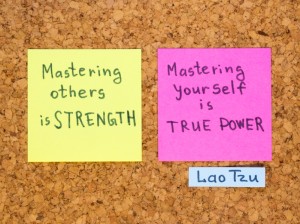Becoming an effective communicator
I am sure that you have already attended a communications training of some sort in your life; be it to improve your communication skills, your team collaboration or to learn particular tools and methods that were supposed to enable you to become a better, more effective communicator.
As I wrote in an earlier post, communications is much more than its mere verbal aspect let alone a set of tools and measures:
Following a study of Albert Mehrabian, an American Psychologist, who looked into which aspects of communications are relevant to the actual understanding of information thus to effectively communicating:
- The verbal aspect only accounts for 7 % (hence the content of what you are saying)
- 38 % come from the paraverbal aspect of communication (intonation, cadence, volume or pace ) and surely not surprising:
- 55 % from the non-verbal aspects.
 Over the last weekend, I have been exploring a technique called “Insight Dialogue” which was recommended to me and really is mindfulness and awareness applied to interpersonal communications. While you pause and relax, you provide yourself with the opportunity to tune into your own feelings and emotions, stepping out of the habitual trigger-response mechanism and opening up, allowing (mutual) space for response rather than reactivity. While you trust what emerges and listen deeply, you finally propose an answer or input, which is truly beneficial to your counterpart or dialogue partners. You remain integer and compassionate not being entangled in emotions or feelings and clinging to words wanting to steer the conversation your way.
Over the last weekend, I have been exploring a technique called “Insight Dialogue” which was recommended to me and really is mindfulness and awareness applied to interpersonal communications. While you pause and relax, you provide yourself with the opportunity to tune into your own feelings and emotions, stepping out of the habitual trigger-response mechanism and opening up, allowing (mutual) space for response rather than reactivity. While you trust what emerges and listen deeply, you finally propose an answer or input, which is truly beneficial to your counterpart or dialogue partners. You remain integer and compassionate not being entangled in emotions or feelings and clinging to words wanting to steer the conversation your way.
What a great way of connecting with each other and having a meaningful conversation. I am now even more passionate about including these techniques into my training, coaching and consulting work. Insight Dialogue certainly offers a wonderful way towards working on Self-Awareness and Management, Social Awareness and Relationship-Management all at the Center of Emotional Intelligence thus at the heart of Mindful Leadership.









